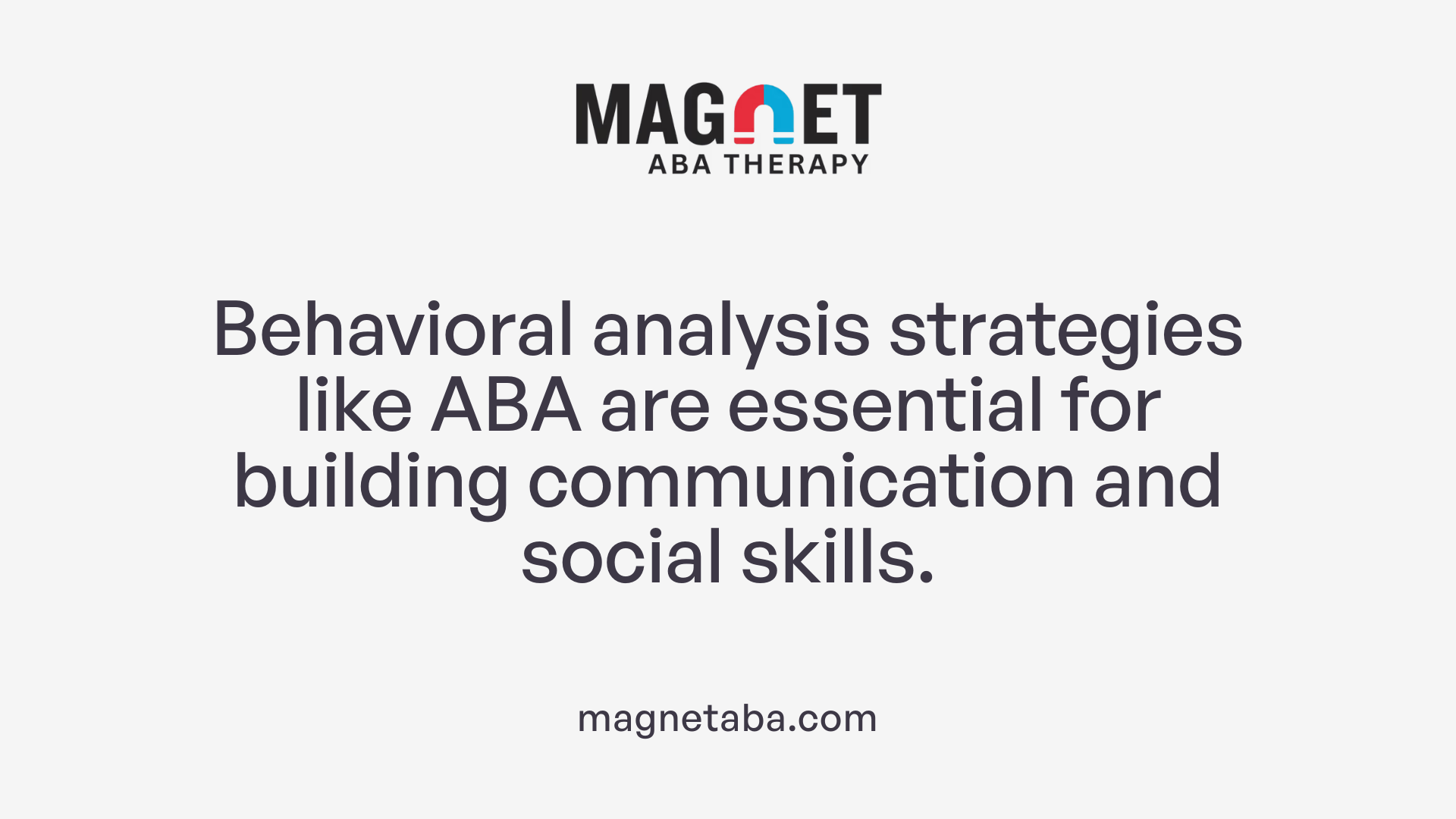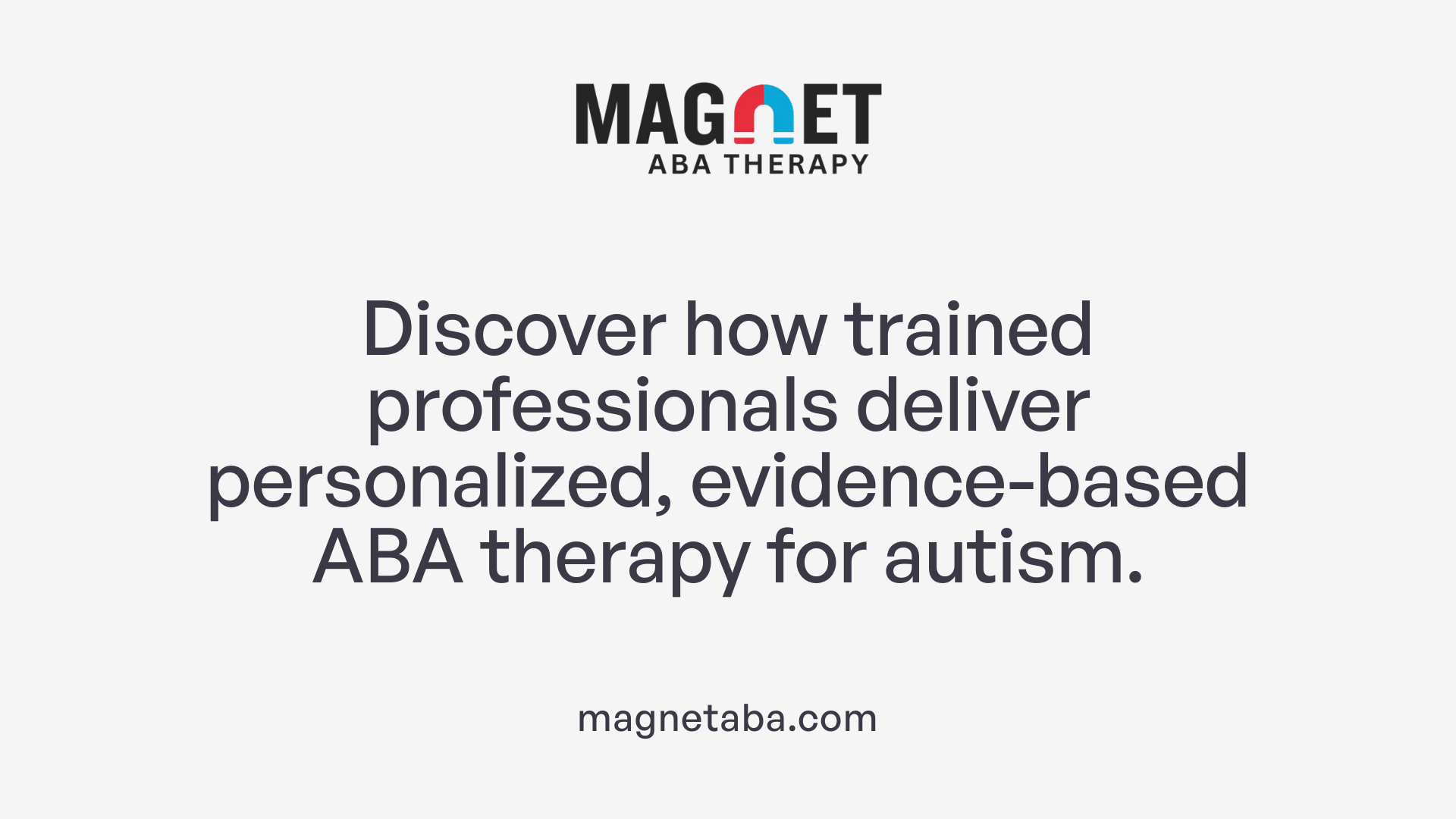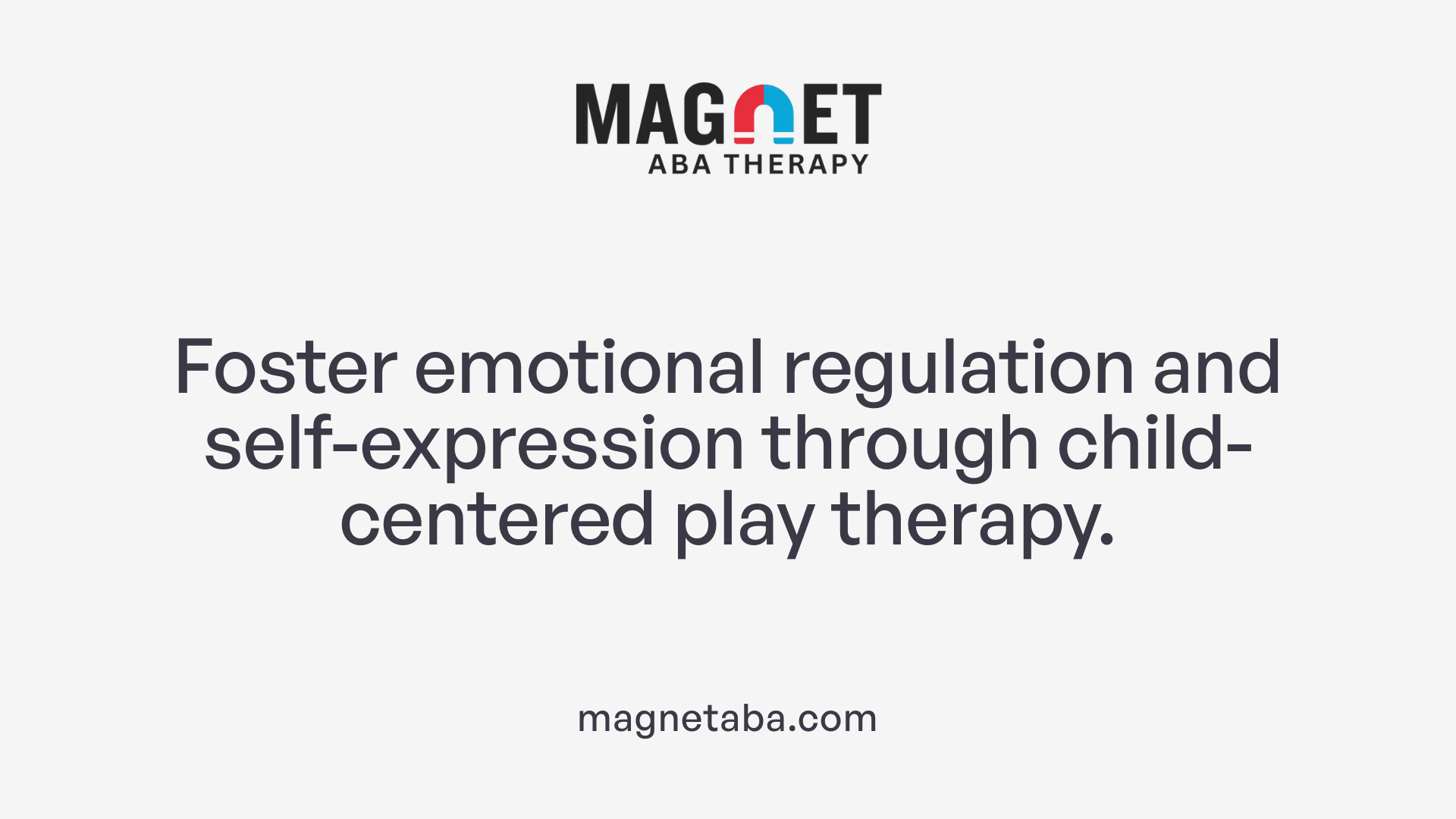Understanding Functional Play Skills in Autism Therapy
Functional play skills are foundational abilities that enable children to engage in meaningful and purposeful play, which is vital for their overall development. For children with autism spectrum disorder (ASD), developing these skills can significantly enhance communication, social interaction, emotional regulation, and problem-solving. This article delves into what functional play skills are, explores how behavioral analysis therapies effectively build these skills, and discusses the role of specialized professionals in supporting children with autism through tailored and evidence-based play interventions.
What Are Functional Play Skills and Their Importance
What are functional play skills?
Functional play skills refer to purposeful and goal-directed play behaviors that allow children to explore their environment, practice communication, develop social relationships, and learn emotional regulation. These skills help children engage in constructive interactions with peers and adults, fostering critical developmental milestones.
Importance in child development
Functional play skills are essential because they help children understand how to use objects and activities meaningfully within their surroundings. For children with autism, these skills support learning how to express feelings, follow social norms, and problem-solve during interactions. Developing functional play encourages flexibility and creativity, two important factors for adapting to daily life challenges.
Relation to communication and social interaction
Functional play provides a natural avenue for practicing both verbal and non-verbal communication. Through guided play therapy approaches—such as Child-Centered Play Therapy and ABA with play-based interventions—children strengthen their ability to share ideas, take turns, and cooperate with peers. Play also fosters emotional regulation, which is critical for successful social engagement and relationship building. As a result, play therapies that enhance functional play skills contribute significantly to children’s communication and social development.
Autism Therapy with a Focus on Behavioral Analysis

What is autism therapy focusing on behavioral analysis?
Autism therapy focusing on behavioral analysis primarily involves Applied Behavior Analysis (ABA), a science-backed method grounded in learning theory principles. ABA aims to improve a child's functioning by encouraging positive behaviors such as communication and social skills while decreasing behaviors that can interfere with learning or daily life.
ABA is individualized and data-driven. Board-Certified Behavioral Analysts (BCBAs) perform comprehensive assessments to develop tailored treatment plans. Registered Behavior Technicians (RBTs) often deliver one-on-one therapy, integrating structured play activities and teaching techniques like shaping and reinforcement to build complex skills over time.
Behavior modification techniques in ABA
ABA uses various strategies for shaping behaviors, including:
- Positive Reinforcement: Providing rewards or praise to encourage desired behaviors.
- Shaping: Gradually building on small steps to develop more complex skills.
- Functional Communication Training (FCT): Teaching effective communication methods, such as verbal language, sign language, or picture exchange, to reduce frustration.
- Teaching social skills through turn-taking, sharing, and group activities.
The therapy also focuses on managing undesired behaviors through teaching self-regulation, patience, and decision-making.
Goals of behavioral analysis in autism therapy
The overarching goals of ABA in autism therapy include:
- Enhancing communication skills, both verbal and non-verbal.
- Promoting social interaction and peer relationships.
- Developing daily living and problem-solving abilities.
- Increasing flexibility and emotional regulation.
- Reducing behaviors that hinder independence.
ABA therapy is often intensive and early intervention has been shown to maximize developmental outcomes. Additionally, parent and caregiver involvement in training ensures skills are reinforced consistently across settings, helping children generalize progress.
Together, these targeted interventions create a supportive environment where children with autism can thrive and develop essential life skills.
Role of Specialized Companies and Professionals in Behavioral Analysis Therapy

How do specialized companies and professionals provide behavioral analysis therapy for autism?
Specialized companies and professionals deliver Applied Behavior Analysis (ABA) therapy by starting with thorough assessments that identify a child's unique needs, strengths, and challenges. These assessments guide the development of individualized treatment plans designed to target specific goals such as improved communication, social skills, and behavior management.
Assessment and individualization
Personalized assessments ensure that therapy is tailored to each child's profile. This individualization allows therapists to focus on meaningful skills and design interventions accordingly, promoting effective learning and growth.
Certified professionals (BCBAs and RBTs)
Board-Certified Behavior Analysts (BCBAs) lead the assessment and design of intervention programs. They oversee both the strategy and the team implementing therapy. Registered Behavior Technicians (RBTs) typically provide one-on-one support during sessions, putting these plans into action with hands-on guidance.
Therapy settings and continuous monitoring
ABA therapy is provided in various environments, including clinics, homes, schools, or community settings. The chosen setting depends on the child’s needs and goals. Continuous data collection throughout therapy sessions enables professionals to monitor progress closely and adapt interventions as necessary to ensure optimal outcomes.
Specialized companies and professional teams thus deliver tailored, evidence-based ABA therapy, combining expert evaluation, certified staff, flexible settings, and ongoing assessment to support children with autism in reaching their full potential.
Integrating Play Therapy in Autism Interventions

What types of play therapy are used for children with autism?
Play therapy incorporates several distinct approaches tailored to meet the unique needs of children with autism spectrum disorder (ASD). Some of the main types include:
- Child-Centered Play Therapy (CCPT): This method creates a safe, non-judgmental space that encourages self-expression and emotional growth. It is particularly effective in helping children with ASD develop social skills and emotional regulation.
- Structured Play Therapy: Activities here are more directed and goal-oriented to foster specific developmental targets.
- Applied Behavioral Analysis (ABA) with Play-Based Interventions: Combines the evidence-based ABA methodology with play activities, using reinforcement and shaping to teach communication and social interaction.
- Developmental, Individual Differences, Relationship-Based (DIR)/Floortime: Focuses on building emotional connections and relationships by engaging at the child's developmental level.
- Social Skills Groups: Group-based play helps children practice peer interaction, cooperation, and social communication.
These diverse approaches support a comprehensive framework for addressing the varied developmental needs of children on the spectrum.
How does play therapy help children express emotions?
Play therapy provides children with autism a natural and accessible way to express feelings that might be difficult to verbalize. Through the use of toys, games, and creative activities, children can explore and communicate their emotions in a non-threatening setting. This fosters emotional regulation by allowing them to process complex feelings safely and learn appropriate emotional responses.
Within CCPT, this self-expression is nurtured by allowing the child to lead play sessions, which helps build trust and emotional awareness. Additionally, DIR/Floortime emphasizes emotional connections by engaging with children where they are developmentally, enhancing the expression and understanding of emotions.
How does play therapy support development of social skills and communication?
Play therapy is instrumental in developing both verbal and non-verbal communication skills as well as social interaction capabilities. Through play, children with autism learn vital social skills including turn-taking, sharing, joint attention, and understanding social cues.
In ABA with play-based interventions, therapists use positive reinforcement and shaping techniques to systematically teach effective communication and social behaviors. Functional Communication Training (FCT) may be incorporated to teach diverse ways of communication such as verbal speech, sign language, or picture exchange systems to reduce frustration and behavioral challenges.
Group play therapy settings offer opportunities to practice cooperation, peer interaction, and listening skills within a supportive peer environment. These experiences also build flexibility and problem-solving skills, which are crucial for adapting to various social situations.
Moreover, parent involvement is emphasized so that children can practice and reinforce these skills consistently at home, ensuring the gains from therapy translate into everyday life.
Overall, integrating different types of play therapy into autism interventions promotes emotional health, communication, and meaningful social engagement for children with ASD.
Child-Centered Play Therapy and Emotional Growth

What is a Non-Judgmental Environment in CCPT?
Child-Centered Play Therapy (CCPT) offers a safe and non-judgmental space where children with autism spectrum disorder (ASD) can freely express themselves. This environment encourages trust and openness, reducing anxiety and making it easier for children to reveal their thoughts and feelings through play.
How Does CCPT Promote Self-Expression and Emotional Regulation?
In CCPT, children choose the play activities, giving them control to express emotions naturally. Therapists support this expression without directing it, fostering emotional awareness. Over time, this process helps children learn to identify and manage their emotions, enhancing their emotional regulation skills crucial for social interactions.
What Benefits Does CCPT Provide for Children with ASD?
For children with ASD, CCPT nurtures the development of vital social skills and emotional growth. By engaging in self-directed play, children improve communication, build emotional insight, and develop coping strategies. The therapy's personalized and empathetic approach addresses unique needs, leading to improved social engagement and overall well-being.
ABA with Play-Based Interventions to Build Functional Skills
How does ABA use play to systematically teach skills?
Applied Behavioral Analysis (ABA) integrates play-based activities to create a systematic approach for teaching children with autism. Structured play sessions offer opportunities to introduce and practice communication, social interaction, and emotional regulation skills within enjoyable, engaging environments. By embedding learning objectives into play, therapists help children acquire crucial functional skills in a naturalistic context.
What reinforcement and shaping techniques are involved?
ABA therapy emphasizes the use of positive reinforcement to motivate children. Praise, rewards, and other incentives encourage desired behaviors during play. Shaping techniques involve gradually building on initial simple actions to develop more complex skills. For example, a therapist might reinforce a child's gesture toward a toy, then gradually encourage vocalizations or hand motions linked to requesting. This step-by-step reinforcement supports skill progression effectively during play.
How does ABA support communication and social interaction development?
Communication development in ABA includes methods like Functional Communication Training (FCT), which teaches children effective ways to express needs verbally or through alternative systems such as sign language or picture exchange communication. Play sessions foster both verbal and non-verbal communication skills, allowing children to practice these in a safe setting. Social interaction is enhanced by teaching turn-taking, sharing, and group participation through play-based activities, promoting social integration and cooperation among peers.
Through these combined strategies, ABA with play-based interventions delivers a scientifically validated, child-friendly approach that facilitates meaningful skill development across communication and social domains.
DIR/Floortime Model: Emotional Connections Through Play
What is the DIR/Floortime Model?
DIR/Floortime is a play-based therapy approach designed to connect with children at their developmental level. This method emphasizes following the child's interests and using those as a bridge to foster meaningful emotional and social growth.
How does DIR/Floortime build relationships?
By engaging directly at the child’s level, DIR/Floortime creates opportunities for emotional connections between the child and therapist or caregiver. Through interactive play, the child feels supported and understood, encouraging trust and deepening relationships.
In what ways does DIR/Floortime promote social understanding?
DIR/Floortime helps children with autism by modeling social cues and encouraging reciprocal interactions within play. This builds their ability to interpret others’ emotions and intentions, enhancing empathy and social awareness.
How does DIR/Floortime enhance emotional regulation?
Using play scenarios tailored to the child’s emotional state, DIR/Floortime teaches children to recognize and manage their feelings. It supports emotional regulation by providing a safe space to express emotions and practice coping strategies.
Through these techniques, DIR/Floortime leverages play as a vital tool, improving emotional connections and social abilities crucial for children with autism.
Group-Based Play Therapy for Social Skills Enhancement
Practicing Peer Interaction
Group-based play therapy offers a structured setting where children with autism can engage with peers in a supportive atmosphere. This setup enables them to practice important social interactions such as initiating conversations, taking turns, and responding to others. Regular opportunities to interact help reduce social anxiety and build confidence in communication.
Cooperation and Sharing
Through group play, children learn to cooperate by participating in activities that require joint effort and mutual support. Sharing toys and negotiating roles during games teaches valuable lessons in patience and empathy. Therapists facilitate sessions to encourage positive behaviors like waiting, helping, and appreciating peers’ contributions.
Preparations for Classroom and Community Settings
Group activities mimic real-world social environments, preparing children for classroom routines and community participation. Structured games such as Circle Time enhance listening skills, attention span, and the ability to follow instructions. These experiences help children develop the social readiness needed for successful integration into school and other social settings.
Group-based play therapy sessions are tailored to the child’s individual needs, ensuring a safe and engaging environment for learning. By fostering social skills like peer cooperation and communication, this approach supports greater social integration and emotional growth for children with autism.
Building Communication and Behavioral Skills via ABA

What is Functional Communication Training (FCT)?
Functional Communication Training (FCT) is a crucial component of ABA that teaches children effective communication methods tailored to their needs. These can include verbal speech, sign language, Picture Exchange Communication System (PECS), or electronic communication devices. FCT aims to reduce frustration and the occurrence of challenging behaviors by providing children with appropriate ways to express themselves.
How does ABA address behavior management?
Behavior management in ABA emphasizes promoting patience, self-regulation, decision-making skills, and reducing undesired behaviors. This approach encourages independence by teaching children how to manage their own actions effectively. Techniques are designed to decrease problematic behaviors while reinforcing positive alternatives.
What roles do shaping and positive reinforcement play in ABA?
Shaping is a strategy used in ABA to gradually build upon small, initial behaviors until they become more complex and functional skills. This method enables the development of communication abilities and various other skills.
Positive reinforcement remains a central tactic in ABA therapy. It involves providing praise or tangible rewards to motivate children and build confidence as they acquire new skills or improve existing ones. This supportive feedback loop strengthens desirable behaviors and accelerates learning.
Together, these strategies create a structured and nurturing environment where children with autism can develop critical communication and behavioral skills effectively through tailored interventions.
Parental Involvement in Therapy for Skill Generalization
How are parents trained and coached during therapy?
Parental training is an essential component of both play therapy and Applied Behavioral Analysis (ABA) for children with autism. Therapists provide coaching sessions where parents learn to implement specific strategies tailored to their child’s individualized treatment plan. This training includes teaching parents how to use positive reinforcement, model social behaviors, and respond to their child's communication attempts effectively.
How do parents reinforce therapy skills at home?
Parents actively reinforce skills by practicing therapy techniques consistently during daily routines and playtime. Therapists guide families in creating supportive home environments using similar toys, games, and interaction styles employed in sessions. This reinforcement helps children generalize skills such as emotional regulation, communication, and social interaction beyond the clinical setting.
Why is consistency between therapy and daily life important?
Maintaining consistency between therapy sessions and everyday life maximizes the effectiveness of interventions. When parents apply the same strategies as therapists, children receive clear, predictable cues which strengthen learning and encourage the transfer of newly acquired skills to real-world situations. Consistent reinforcement encourages independence and helps reduce behavioral challenges by promoting routine and understanding.
Through ongoing collaboration between therapists and parents, children with autism receive continuous support that extends therapeutic gains into all facets of their lives, enhancing overall development and social integration.
Evidence-Based Outcomes and Early Intervention Benefits
What Scientific Research Supports ABA Therapy for Autism?
ABA therapy is grounded in learning theory and extensively supported by scientific research. Studies demonstrate its effectiveness in modifying behavior and fostering skill development in children with autism. The approach employs evidence-based techniques like positive reinforcement and shaping, which are systematically applied to improve communication, social interactions, and daily living skills. The U.S. Surgeon General endorses ABA, underscoring its validation as a reliable treatment method.
Why Is Early Intensive ABA Therapy Important?
Starting ABA therapy early, especially in young children, leads to significantly better developmental outcomes. Research indicates that early intervention helps maximize the benefits by capitalizing on neuroplasticity during formative years. Early intensive ABA therapy enables children to acquire crucial skills at a faster rate, mitigating delays common in autism spectrum disorder. These interventions also provide structured opportunities for learning communication and social behaviors before maladaptive patterns become entrenched.
How Does Early Treatment Enhance Language and Social Skills?
Early and integrated ABA therapy notably improves language development, which is critically important for nonverbal or minimally verbal children. Functional Communication Training (FCT), an ABA component, teaches children alternative communication methods such as sign language or electronic devices, reducing frustration and problematic behaviors.
Additionally, social skills like turn-taking, sharing, peer interaction, and group participation are strengthened through ABA’s focus on structured activities. Center-based ABA programs, with their resource-rich environments, offer peer interaction opportunities that further boost social competence. Reinforcement strategies promote children's confidence and willingness to engage socially, aiding integration into educational settings and daily life.
Together, these evidence-based benefits highlight why early, intensive ABA therapy remains a cornerstone of effective autism treatment, fostering meaningful gains in communication, socialization, and independence.
Advancing Functional Play Skills for Lifelong Development
Functional play skills are vital building blocks that support children with autism in navigating their social worlds, communicating effectively, and managing their emotions. Behavioral analysis therapies, particularly ABA, combined with specialized play therapies, provide structured yet engaging frameworks to develop these competencies. The active involvement of trained professionals ensures personalized and evidence-based approaches, while parent and caregiver participation helps generalize skills beyond therapy sessions. Early and intensive intervention promises the best outcomes, underscoring the importance of timely support. Through these collaborative efforts, children can build functional play skills that pave the way for greater independence, social integration, and improved quality of life.











